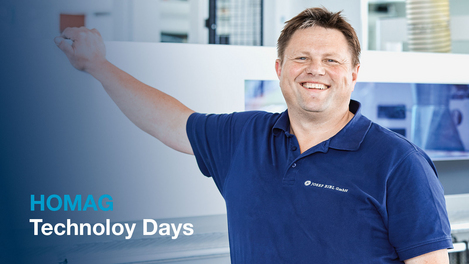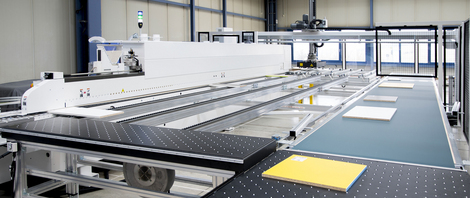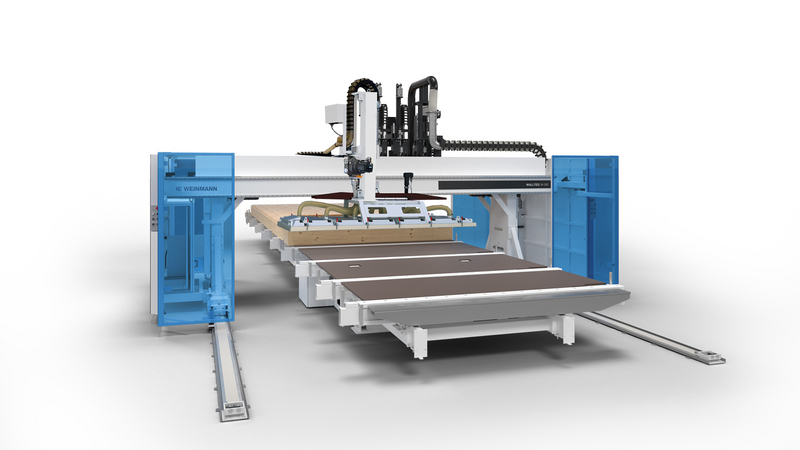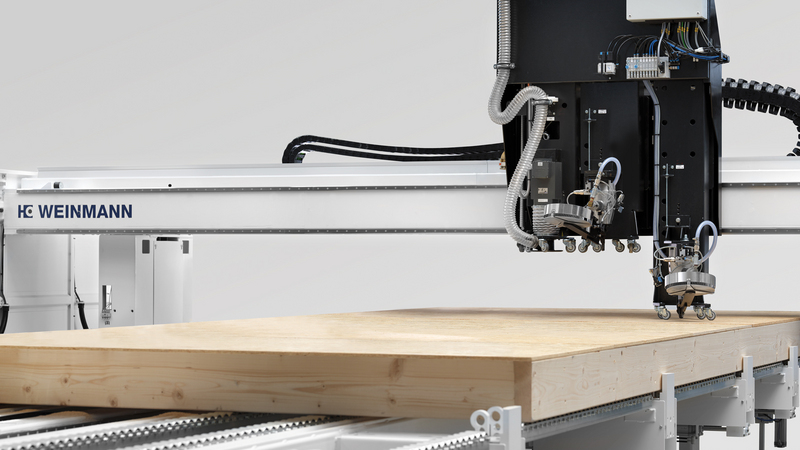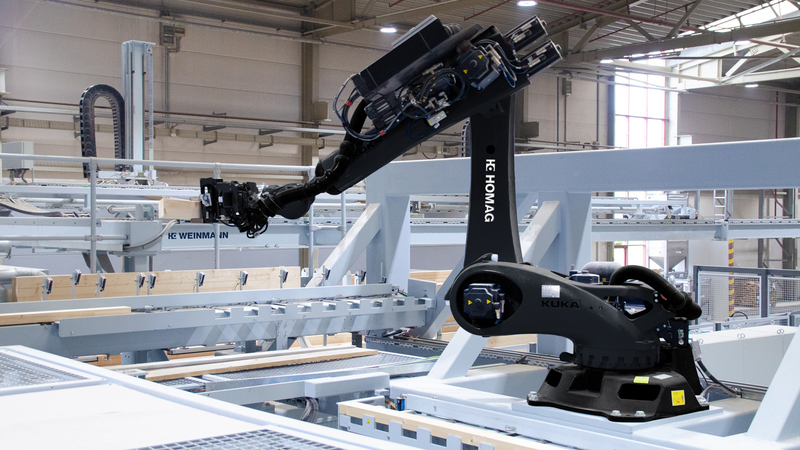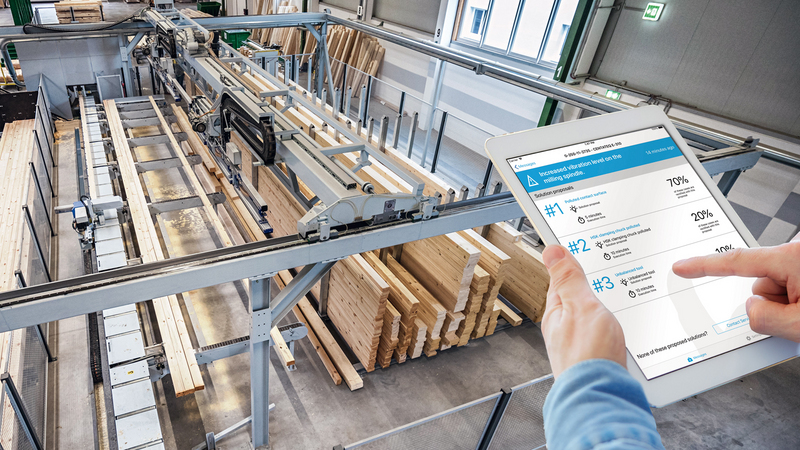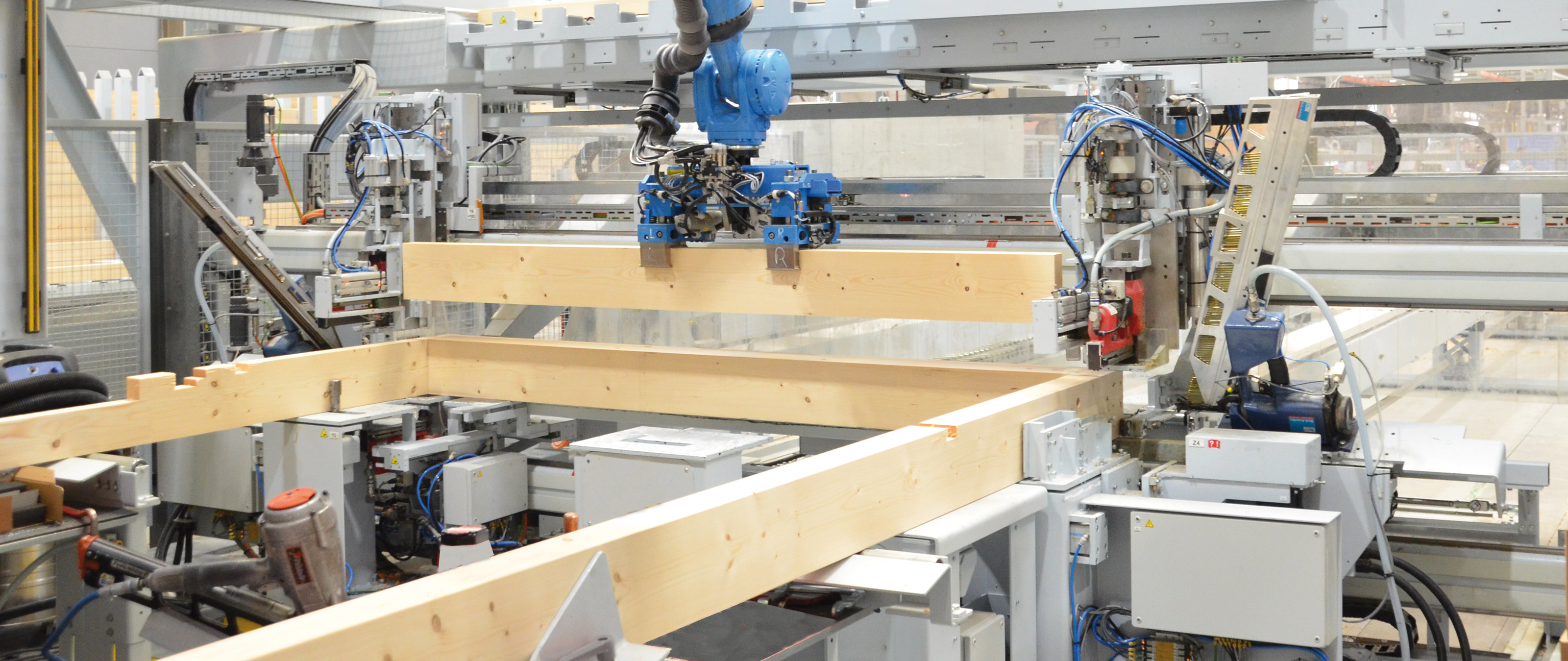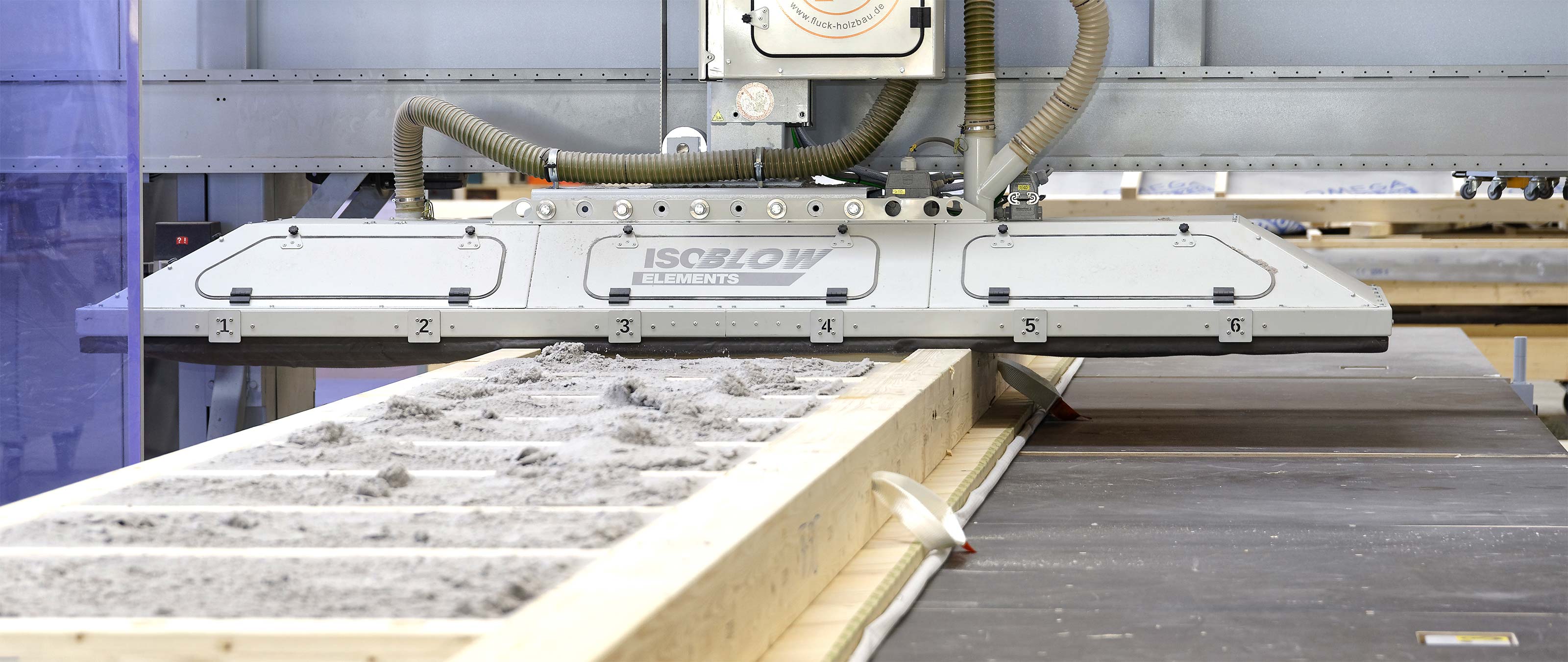Automation solutions for timber construction
At LIGNA 2019, WEINMANN is presenting solutions for timber construction, with the latest developments in machine technology and software exhibited in live demos and presentations. Fully automated production lines and entry-level CNC-controlled machines for automated production allow for greater prefabrication and increased efficiency throughout the entire production process.
Efficient insulation technology
Until now, the insertion of insulation has represented a crucial "bottleneck" in automated element production. This is now a thing of the past, as the WEINMANN multifunction bridge WALLTEQ M-380 insuFill provides you with an efficient solution for inserting insulation material.
Thanks to the combination of blow-in plate and multifunction bridge, loose insulation material is inserted into timber frame elements in a process that is both logical and fully automatic, with the opportunity for a final visual inspection. Simple exterior walls, gable triangles, TJI elements, and special elements can be insulated in a high-quality, economical and environmentally friendly manner. Despite their substantial density, even passive house elements can be injected with a homogeneous insulating layer - with no need for manual cutting, which involves waste, and eliminating the risk of dimension tolerances.
During the insulating process, the multifunction bridge positions the blow-in plate fully automatically and transfers the data from the work preparation (e.g. the geometry and size of the component, type of insulating material, and quantity of insulating material) via a special interface. Based on this data, the blow-in plate fills every cavity with insulating material as an autonomous unit; even small cavities and special shapes present no problem. It is already possible to insert cellulose, wood fiber insulation, and mineral fiber insulation, with further insulation materials to follow in the future. During the blow-in process, the amount of insulation material that has already been blown into the compartment is continuously monitored. This ensures that the insulation material is applied with quick and even compression in compliance with the manufacturer's specifications.
Depending on the capacity required, there are various options for fully automatic blow-in solutions, from a WALLTEQ M-380 insuFill plus fastening units and processing units for the production of 30-50 houses per year, right up to multifunction bridges with a separate insulating station for capacities of up to 400 houses per year and above.
The multifunction bridge provides businesses with a machine that can be used to carry out all work in the field of element construction. The WALLTEQ M-380 insuFill can be expanded to meet individual needs, and is therefore highly versatile. The integrated 12-slot tool changer supplies the right tool without delay, thereby reducing setup times to a minimum and increasing efficiency. The fixing, sawing, routing and drilling takes place fully automatically. Combining element production and the insulating process on a single workstation saves a significant amount of space in the hall.
Practical advantages:
- Insulation of a consistently high and demonstrable quality
- Increased efficiency
- High level of flexibility when choosing insulation materials
- Workplaces are more pleasant thanks to ergonomic work processes and a significantly reduced dust level
- Reduced cost and effort in terms of storage and manipulation of the insulation material
- Significant material savings due to reduced material waste
The multifunction bridge WALLTEQ M-380 insuFill can be viewed at WEINMANN stand C26 in Hall 13. Come and experience our new technology for yourself!
Automated production of small quantities in timber frame construction
For the production of wall, roof, ceiling, and gable elements, WEINMANN offers a machine that operates with maximum efficiency, even with small quantities - the WALLTEQ M-120. This multifunction bridge is equipped with holders for stapling and nailing devices and a routing unit to facilitate automatic fastening and processing of the sheathing. Openings for windows, doors and sockets, as well as free forms such as circles, curves or diagonal cuts can all be processed, with the result being finished elements with a high level of dimensional accuracy. The WALLTEQ M-120 offers an excellent price/performance ratio with low acquisition costs, and is the perfect entry-level solution for small and medium-sized carpentry businesses.
Practical advantages for you:
- Consistently high-quality element production
- Flexible manufacturing of various elements without changeover times
- Entry-level solution with very low acquisition costs
- Easy to integrate into production halls thanks to low space requirements
Automation solutions for prefabricated housing construction
Fully automatic, networked production lines offer the highest degree of prefabrication in prefabricated housing construction. Innovative technologies, integrated robots, and digital modules enable efficient production processes, while the design of the production lines means that they can be used in a variety of ways and expanded with modules - a solution for the future.
From frame work production to panelization, right through to finishing - all process steps are combined in the production line. The use of robots means that the entire material-handling stage is automated, and processes are simplified. The robot picks up heavy components and places them in the relevant position. For example, the robot assumes responsibility for the complete stud mounting process during the manufacture of frame works. To do this, the robot removes the studs from their respective collection positions and places them in the frame work at various angles. The process of positioning panels is also optimized thanks to the use of a robot. Panel materials are placed on the element in a fully automated process and are then attached and processed by the multifunction bridge. The entire process-starting with the unprocessed part feed and ending with the loading of the finished elements - is fully automated.
All information on the latest automation solutions for prefabricated housing construction can be found at the HOMAG stand in Hall 13 and the WEINMANN stand in Hall 14.
Timber construction 4.0
Software, networking, digitization - these topics will have a major impact on prefabricated housing construction in the future. As a complete system provider, WEINMANN offers fully integrated solutions for developing timber construction further and allowing businesses to take a step toward timber construction 4.0.
Production KPIs are essential for economic and sustainable production. They provide information about the current status of the production unit with regard to performance and efficiency. The software module MMR (Machine Monitoring and Reporting) allows machine times and statuses to be recorded, a history of data to be maintained, and, with standardized KPIs, provides the ideal basis for decisions and optimization. The number of workpieces produced, period of use, utilization factor, cycle time, and material consumption are recorded systematically, transparently, and comprehensibly. This allows businesses to identify potential for optimization within their production process and plan the way in which they use their production line to achieve the best-possible results. Error analysis displays errors and indicates where maintenance is due, thereby significantly increasing machine availability. The systematic data capture and decision-based display of the statuses and KPIs serve as a useful basis for decisions across production.
In addition, production data from the machines and systems is used to deduce maintenance information and provide this information to the operator. This allows maintenance to be scheduled in a timely manner and minimizes malfunction times and downtime. The necessary data is also provided via the MMR software. All pending maintenance tasks can be viewed via maintenance tracks, and the production plan can be fine-tuned and adapted to this information in good time.
Production control station optimizes material flow
Specially designed for larger production lines in which several machines are integrated, there is an option for displaying and controlling these machines using control station software. The entire production line is visualized and interlinked via this production control system, which also enables communication between the individual machines. All production orders are tracked, throughfeed times are recorded, and error messages are documented, ensuring that an evaluation can be performed as accurately as possible. For example, the data is provided in the form of diagrams and tables that can be used to quickly identify potential for optimization. The control station ensures a smooth material flow throughout the entire production process. Interfaces enable data to be exchanged in a comprehensive manner, and the information is consolidated in a single centralized location.
In addition, all CNC-controlled machines from WEINMANN are tapio-ready. This means that cloud-based technologies such as DataSave, ServiceBoard and MachineBoard can be actively used. Taking a step into the digital world will help to advance timber construction even further. End-to-end flows of data, materials, and production increase quality and efficiency throughout the entire process.

